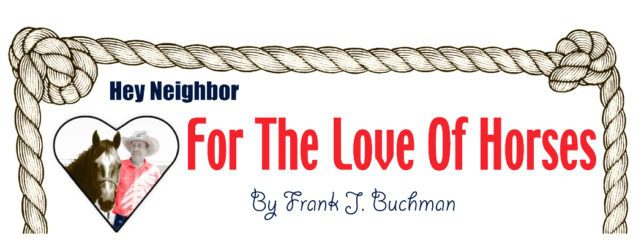Many horse-loving-youngsters don’t have the prettiest horse.
Yet, their appreciation and hard work for their horses often surpass those who have better conformation animals.
There was a need to recognize these young horsemen for their dedicated ability, according to Andrea Simons during the International Equine Judges Seminar in Oklahoma City.
“Horse showmanship competition was adapted from the livestock industry where young people have been evaluated for decades on their ability to present livestock in a professional manner,” Simons said.
“The class came about in order to place emphasis on effectiveness of the exhibitor, not quality of the animal,” Simons continued. “Those individuals who did the best job of preparing both themselves and their animals, and presented their animals most effectively were the ones to come out at the top of the class.”
Simons has been in the horse business as a breeder, trainer and judge more than 30 years. She has judged horses throughout the country, overseas and at several world championship shows for numerous breed organizations.
Along with her daughters, Sara and Jan, Simons owns and operates Simons Show Horses at Aubrey, Texas.
“The ideal showmanship performance consists of a posed, confident, neatly-attired exhibitor leading a well-groomed and conditioned horse that quickly and efficiently performs the requested pattern with promptness, smoothness and precision,” Simons described.
Many hours of preparation and training go into producing a showmanship winner as the showman must have a fit animal that is well-trained for presentation.
“The basics of horses’ training begin on the ground where horses learn to respond to a variety of cues including pressure on the halter, body position and voice commands,” Simons critiqued. “The showmanship class provides a great opportunity to display that training.”
Today’s showmanship contests are generally different than those at horse shows four decades ago when exhibitors would typically circle the arena, line up and then work individually at the walk, set up for inspection, reverse and trot back into the lineup.
Patterns now typically vary markedly from show to show and include complex maneuvers that must be memorized such that it’s necessary for the outline to be posted at least an hour before the competition.
Simons insisted, “Patterns should be clearly drawn with precise written instructions. A legend enables exhibitors to more thoroughly understand what is expected from them.”
Maneuvers to be included in a pattern are: leading the horse at a walk and trot in a straight line, or to arc around a marker; back-up; stop; pivot 90, 180, 270 or 360 degrees or any combination of these; set; and presentation of the horse.
“Appearance of the horse and exhibitor are of utmost importance,” Simons pointed out.
The horse must be properly conditioned, trimmed and groomed with hooves preferably shod.
“A poorly or ill-fitting halter and excessively long chain on the lead are highly discriminated against,” Simons said.
Poor exhibitor appearance can sharply distract from a performance. “It’s essential that clothing is well-fitting, pants have to be over the tops of clean boots and the clean hat must be appropriately shaped,” Simons stressed. “No spurs or chaps are allowed.”
First-look at the exhibitor leaves a lasting impression with a judge, and it should be positive.
“When we are judging several dozen exhibitors, if that first impression isn’t memorable, we might continue to overlook somebody regardless how well they do,” Simons acknowledged. “Exhibitors should have correct posture and be in sync with their horse.”
Exhibitors always lead with the shank in the right hand from the left side positioned mid-neck of the horse. The hand is never changed unless the exhibitor is showing the horse’s teeth.
“The hand needs to be steady in a hypothetical four-inch box, not moved all around the horse’s head,” Simons stated. “Horses are to be pushed away from the exhibitor, turning to the right, and never pulled.”
Severe faults of the overall appearance of the performance include touching the horse, pointing toes or kicking at the horse’s feet and obstruction of the judge’s view.
“Safety is most essential in every horse show class,” Simons declared.”It is dangerous to stand in front of a horse, and exhibitors will always be penalized heavily for being in that position.”
Likewise, Simons cautioned to be aware of the horse’s position in relation to other exhibitors in order to prevent crowding and the possibility of horses’ kicking.
Credits go to an exhibitor who maintains correctness in each maneuver, self-carriage of horse and handler, efficient square set-up and pivoting correctly on one foot.
Faults causing loss of points include omission or addition of maneuvers, rearing or pawing, knocking over or spitting a cone, working on the wrong side of the cone and horse circling its exhibitor.
“Always continue showing until the class is dismissed. It might be the last look that determines the placing,” Simons concluded.
+++
